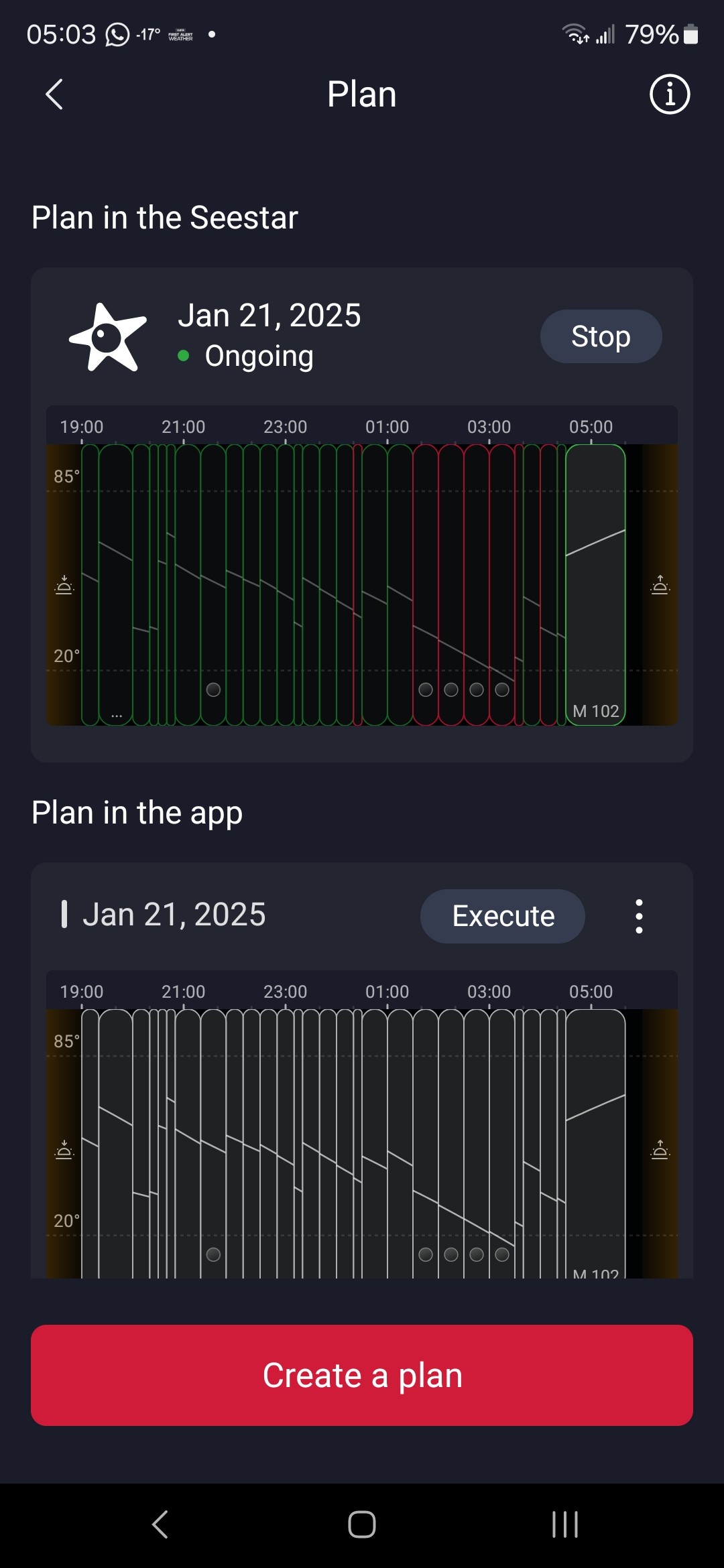I finally had a clear night, the first one in more than a month, so I was able to test the planning mode for the first time. Here are my impressions, the good, the bad and the ugly.

The good, actually the amazing. It works, it's usable and more importantly you can take pictures while sleeping! In my opinion this is the most important new feature released in the last year, and frankly very long overdue. I created a plan with 28 targets, from 10 minutes to 70 minutes, for a total time of 12h40m. The S50 went through it all successfully and powered down on its own at the end. The temperature was -10C at the start of the evening and reached -18C just before dawn. The anti-dew heater was on all the time and I used a 20Ah external USB power module. In the morning the USB module was empty and the S50 battery level was 95%. I also used my own 3D-printed dew and stray light shield, which drops off automatically when the arm closes. My S50 is one year old and I have used it a lot in this configuration during this time. There have been many threads here about powering the S50 with an external power source, battery replacement, tangled wires and magnetically coupled USB cables, operating in sub-zero temperatures, battery lifetime, arm closing with dew shield and so on. All these are non-issues and I hope this test helps address some of those concerns.
The not so good. 7 of the 28 captures have failed. I do not know really why, apart from a very short and cryptic status label. One was of Jupiter and it says "Shoot failed", the other 6 are all "Go To failure". I suspect these 6 are due to the target running into the trees, but there is no way to tell. I was running low on targets while creating the plan, which I did in 20 minutes, just before the start of the night. I can try to reconstruct them in Stellarium and confirm whether that's the case or not. Which brings us to what improvements could be made. Let's see:
- 10-minute granularity is too large, Dwarf 3 has 1 minute. If you want to catch moons of Jupiter or Saturn even 1 minute can be too long. A user selectable granularity would be best.
- This is not a planning issue but planning now makes it easier to compute stacking efficiency - the total time is in the plan and the number of 10-second successfully stacked frames is in the file name. Most of the captures had efficiencies around 65% and none of them went over 75%. The night was perfectly clear, there was no wind and nobody walked around the S50, not at -18C. So when you prepare your plan, you have to take that into account, your mileage will vary.
- Preparing a plan in SkyAtlas is not easy. Yes, there are light gray rectangles for all the targets, but they do not have the proper orientation, and more importantly, unless you have a fully unobstructed view in all directions, you cannot be sure whether the target will be visible during the window you select or not. I suspect that's why 6 of my 28 targets failed but I cannot be sure.
The not so pretty. I am still angry it took so long to get this feature, we should have had this 6 months ago, I started asking for some kind of automatic scheduling on this forum in March 2024 I think. This would have saved me so many sleepless nights! It turns out all it took was for Dwarf Lab to announce the Dwarf 3 and ZWO promptly came up with what looks like a carbon copy of the Dwarf 3 planning feature. One year ago ZWO was a trailblazer in the field of consumer grade smart telescopes, now they simply follow.